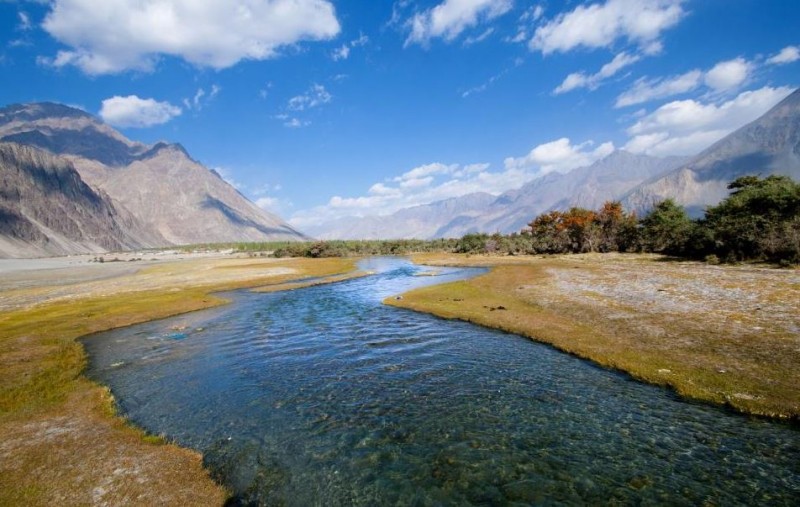
In the vast and diverse landscape of South Asia, rivers have long been lifelines for civilizations, providing sustenance, transportation, and serving as cultural symbols. India, with its extensive river network, shares several of these water bodies with neighboring countries. Notably, several rivers originating in India flow into Pakistan, shaping not only the physical geography but also playing a crucial role in the geopolitics of the region.
1. Indus River (Sindhu River)
The mighty Indus River, originating near Manasarovar Lake in Tibet, China, is one of Asia's longest rivers. It flows through the Indian-administered region of Jammu and Kashmir before entering Pakistan. The river, historically known as Sindhu, gives Pakistan its name, derived from the Sanskrit word for river. The Indus has been a vital source of water for agriculture and industry in both countries. Its waters are critical for Pakistan's agricultural heartland in Punjab and Sindh provinces. However, the river's importance goes beyond just water supply; it has cultural and historical significance, shaping the identity and heritage of the region.
2. Jhelum River
The Jhelum River, also originating in the Kashmir region of India, flows through the Jhelum Valley before entering Pakistan. Known as Vitasta in ancient texts, the river traverses through scenic valleys and gorges, providing irrigation and hydropower potential along its course. In Pakistan, it joins the Chenab River near the city of Jhang. The Jhelum River has been a significant channel for trade and transportation historically, linking the mountainous regions of Kashmir with the plains of Punjab.
3. Chenab River
The Chenab River begins its journey from the Bara Lacha Pass in Himachal Pradesh, India. Fed by glaciers and snowmelt from the Himalayas, it flows through the Indian states of Himachal Pradesh and Jammu and Kashmir before entering Pakistan. The river's flow is augmented by tributaries such as the Jhelum and Ravi rivers, further enhancing its importance as a source of water for agriculture and hydropower in both countries. In Pakistan, the Chenab River merges with the Jhelum River before joining the Indus near the city of Mithankot.
4. Ravi River
The Ravi River originates from the Rohtang Pass in Himachal Pradesh, India. It flows through the states of Himachal Pradesh and Punjab, India, before entering Pakistan. The river has been a focal point of disputes and discussions due to its utilization for irrigation and hydropower projects. In Pakistan, the Ravi River joins the Chenab River near the city of Ahmadpur Sial. The river's water is crucial for agricultural activities in both Indian and Pakistani Punjab regions.
5. Sutlej River
The Sutlej River originates from Lake Rakshastal near Mount Kailash in Tibet, China. It enters India near the town of Shipki La in Himachal Pradesh and flows through the states of Himachal Pradesh and Punjab before entering Pakistan. The river has historically been significant for the Indus Valley Civilization and continues to play a crucial role in irrigation, hydropower generation, and transportation. In Pakistan, the Sutlej River joins the Chenab River near the city of Uch Sharif, contributing significantly to the agricultural productivity of Punjab province.
These rivers flowing from India into Pakistan not only sustain millions of lives through irrigation and drinking water but also serve as a source of tension and cooperation between the two countries. The Indus Waters Treaty of 1960, brokered by the World Bank, governs the distribution of waters from these rivers between India and Pakistan, aiming to provide a framework for peaceful cooperation amidst occasional disputes over water resources.
In conclusion, the rivers originating in India and flowing into Pakistan are not merely geographical features but integral components of the socio-economic and political landscapes of both countries. Understanding and managing these shared water resources are crucial for sustainable development and peaceful coexistence in South Asia.
Thane Court Sentences Man to 10 Years for Sexual Assault on Minor
Vanessa Hudgens Welcomes First Child with Cole Tucker on His Birthday